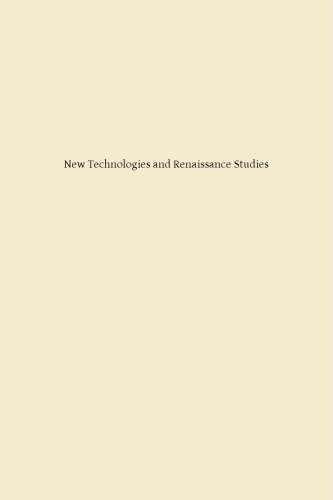

Most ebook files are in PDF format, so you can easily read them using various software such as Foxit Reader or directly on the Google Chrome browser.
Some ebook files are released by publishers in other formats such as .awz, .mobi, .epub, .fb2, etc. You may need to install specific software to read these formats on mobile/PC, such as Calibre.
Please read the tutorial at this link: https://ebookbell.com/faq
We offer FREE conversion to the popular formats you request; however, this may take some time. Therefore, right after payment, please email us, and we will try to provide the service as quickly as possible.
For some exceptional file formats or broken links (if any), please refrain from opening any disputes. Instead, email us first, and we will try to assist within a maximum of 6 hours.
EbookBell Team

4.4
72 reviews
ISBN 10: 0866983694
ISBN 13: 9780866983693
Author: William R Bowen, Raymond G Siemens
Near the forefront of any examination of disciplinary pursuits in the academy today, among the many important issues being addressed is the role of computing and its integration into, and perhaps revolutionizing of, central methodological approaches. The series New Technologies in Medieval and Renaissance Studies addresses this context from both broad and narrow perspectives, with anticipated discussions rooted in areas including literature, art history, musicology, and culture in the medieval and Renaissance periods.
The first volume of the series, New Technologies and Renaissance Studies, presents a collection of contributions to one ongoing forum for the dialogue which lies at the heart of the book series, the annual "conference within a conference" of the same name which takes place during the Renaissance Society of America gathering, dedicated specifically to the intersection of computational methods and Renaissance studies. Papers in this volume exemplify those fruitful and productive exchanges, from their inception at the 2001 meeting in Chicago to the 2005 meeting in Cambridge.
Introduction: Technology and the Renaissance Mind
Early Mechanical Innovations
Printing and the Spread of Knowledge
Advances in Navigation and Exploration
Renaissance Art and Technological Influence
Scientific Instruments and Discovery
Military Technology and Warfare
Architectural Innovations
Mathematics and Engineering in the Renaissance
Patronage, Knowledge, and Technology
Communication and Information Networks
Case Studies of Key Inventors
Cross-Cultural Exchanges and Technological Transfer
Challenges of Preservation and Documentation
The Legacy of Renaissance Technologies
Future Directions in Renaissance Studies
what new techniques were used in renaissance art
renaissance technology and science
2 inventions during the renaissance
2 new technological advancements used in ww1
3. new technologies are introduced
2 artistic innovations/changes that occurred during the
Tags: William R Bowen, Raymond G Siemens, Technologies, Renaissance